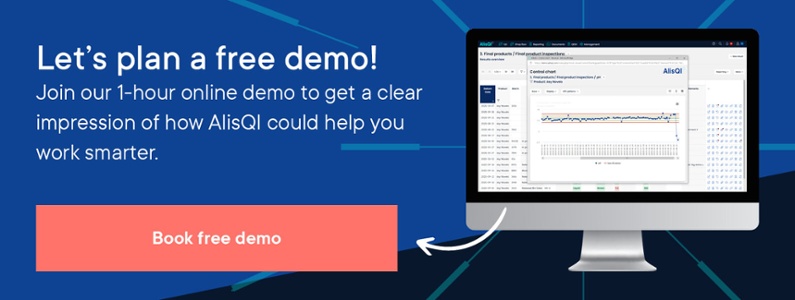Solvers help you monitor quality, apply SPC, manage equipment, and ensure traceability.

Of course I don’t look busy, I did it Right First Time!
If you were to ask ten random people what is scarce for them, money and time are most likely the top two responses. If you were to ask ten random plant managers, you will get exactly the same answer regarding their business. This probably yields true for any manager in any business. Time and money are what we all typically run low on.
At the same time, we often waste these scarce resources on correcting our own mistakes. Imagine how much time and money you would save if you did not have to do that rework.
When we zoom in on manufacturing, we see that the majority of manufacturers have to deal with price erosion. Competition forces them to lower prices. In order to even sustain their business, they have to continuously improve their efficiency. A simple job search for continuous improvement managers on Monster yields over 1600 results, which tells us that this area is booming.
Across all manufacturing areas we are active in, including chemicals and food & beverage, we see this megatrend of First Time Right (FTR) or Right First Time (RFT) programs (or as we like to call it: You had just one job!). Manufacturers want to create processes that result in quality products the first time around. Rework or adjustment should be avoided where possible.
Support FTR with Quality Intelligence
A leading automotive paint company approached us to support their First Time Right efforts with our quality intelligence platform. The data we collect for QC labs tells a lot about the quality of individual batches, and the adjustments they needed to be qualified as ‘in spec’.
For a handful of batches and a handful of recipes, analyzing and interpreting this data is not complicated and can easily be managed by hand or with some basic Excel wizardry. However, with hundreds of batches and recipes, this FTR data management gets complicated very quickly, just due to the sheer volume of numbers. And that is where we come in.
Our approach to helping you improve your First Time Right is a three-stage process:
- Identify non FTR-products
- Identify opportunity for improvement
- Evaluate the results
Step 1: Identify non-FTR products
In its most simple form, we simply count the number of iterations that a batch needs to be released for shipping. Any number higher than one tells us there has been at least one adjustment, and thus it disqualifies as First Time Right.
Aggregating this data per product(group) over time provides our overall FTR performance per product(group). This helps us to identify the products that we struggle with and helps us to prioritize our efforts.
In this screenshot, our Adhesives product group has the lowest FTR percentage, as well as the highest number of batches, so improving our FTR rate will likely have the biggest impact.

Once we selected the product(groups) that we want to improve, we can zoom in on the underlying adjustments.
Step 2: Identify opportunity for improvement
By recording all adjustments per batch, we aggregate and evaluate our rework over time. If we find similarities or trends there, we might be able to incorporate those adjustments in our initial recipe, so that there is no need to adjust after the initial production run.
In the example of our Adhesives group, we see in the next screenshot that over several batches, the amount of solvent we added to achieve the desired result ranged between 0.51% and 1.52%, with an average of 0.89%. Adjusting our recipe with this factor is likely to increase our First Time Right score.

This is a schoolbook example of prevention instead of correction. Nothing different from your Christmas dinner rehearsal, but then on an industrial scale. Real improvement may be more complex of course, as different adjustments to a recipe might interfere or react. However, trend analysis of your adjustment dataset will be key in improving your recipes. And that is what AlisQI helps you with.
Step 3: Evaluate the results
The third step in this sequence is the evaluation of your improved recipe. Did we indeed improve our FTR score for the product? And do we see any significant differences in our product quality between the two versions of our recipe? That is exactly the type of questions AlisQI can answer.
The screenshot below shows how boxplots are used to visualize the differences in quality between different recipes. Here the MV0, MV1, MV2 etc. all represent a different version of the recipe. They show the differences in viscosity between the different recipes, caused by the change in the amount of solvent added to the mix. This allows you to evaluate the recipes and settle on the one that gives the best First Time Right results.

With these First Time Right overviews in our quality intelligence platform, we enable our customers to improve their products and processes. Your data can tell you how to optimize, just make sure you have the right tools in place.
Curious how you can improve your First Time Right?


